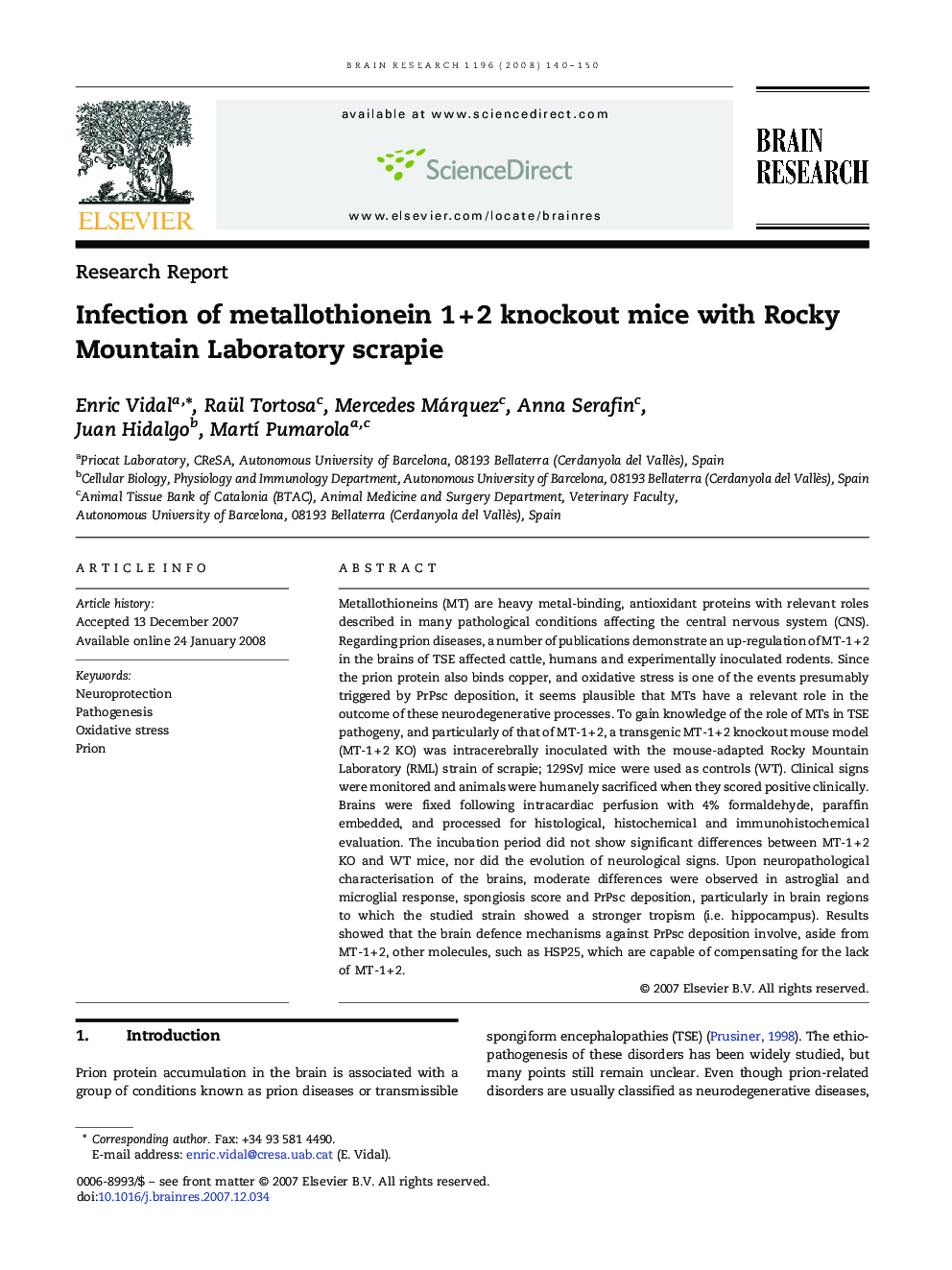| Article ID | Journal | Published Year | Pages | File Type |
|---|---|---|---|---|
| 4330012 | Brain Research | 2008 | 11 Pages |
Abstract
Metallothioneins (MT) are heavy metal-binding, antioxidant proteins with relevant roles described in many pathological conditions affecting the central nervous system (CNS). Regarding prion diseases, a number of publications demonstrate an up-regulation of MT-1Â +Â 2 in the brains of TSE affected cattle, humans and experimentally inoculated rodents. Since the prion protein also binds copper, and oxidative stress is one of the events presumably triggered by PrPsc deposition, it seems plausible that MTs have a relevant role in the outcome of these neurodegenerative processes. To gain knowledge of the role of MTs in TSE pathogeny, and particularly of that of MT-1Â +Â 2, a transgenic MT-1Â +Â 2 knockout mouse model (MT-1Â +Â 2 KO) was intracerebrally inoculated with the mouse-adapted Rocky Mountain Laboratory (RML) strain of scrapie; 129SvJ mice were used as controls (WT). Clinical signs were monitored and animals were humanely sacrificed when they scored positive clinically. Brains were fixed following intracardiac perfusion with 4% formaldehyde, paraffin embedded, and processed for histological, histochemical and immunohistochemical evaluation. The incubation period did not show significant differences between MT-1Â +Â 2 KO and WT mice, nor did the evolution of neurological signs. Upon neuropathological characterisation of the brains, moderate differences were observed in astroglial and microglial response, spongiosis score and PrPsc deposition, particularly in brain regions to which the studied strain showed a stronger tropism (i.e. hippocampus). Results showed that the brain defence mechanisms against PrPsc deposition involve, aside from MT-1Â +Â 2, other molecules, such as HSP25, which are capable of compensating for the lack of MT-1Â +Â 2.
Related Topics
Life Sciences
Neuroscience
Neuroscience (General)
Authors
Enric Vidal, Raül Tortosa, Mercedes Márquez, Anna Serafin, Juan Hidalgo, Martà Pumarola,
